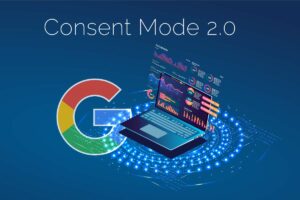The beautiful new website is online, but Google can’t find it? Often it is because the technical search engine optimization was forgotten. Don’t worry – that can be changed!
In order for a website to be found on the Internet via the common search engines, certain requirements must be met. Otherwise, it can happen that the website designed at great expense and with a lot of heart and soul – and thus the company or the product – remains invisible. Properly executed on-page search engine optimization (SEO) provides a remedy.
What is on-page SEO?
This refers to the implementation of certain measures on a website, which should lead to this page achieving a better ranking in the
search results
achieves.
On-page SEO works in two areas of the website: on the technical level and in the content that users are presented with.
- Content optimization includes, for example, the strategic selection of strong keywords and the creation of high-quality, attractively prepared content. This aspect of SEO is already relatively well known and is increasingly taken into account.
- Technical optimization refers to technical characteristics such as the loading and response times of a website. This aspect of SEO is often put on the back burner or left out altogether.
To optimize a website, technical SEO is just as important as content SEO!
Technical SEO forms the technical infrastructure for all further on-page measures. It creates the conditions for search engines to easily read and quickly index the content of a website. If, on the other hand, a page takes several seconds to load, the navigation is unclear, or links go nowhere, potentially interested users quickly leave the website. And may never come back!
Technical SEO ensures that your content can deliver its full impact and should definitely be part of your SEO strategy.
7 tips for technical search engine optimization
Technical SEO consists of a whole series of measures. Some are only small adjusting screws, others are fundamental. Here is a selection of the most important points that should definitely be emphasized when optimizing your website:
Search engines do recognize when your text contains images. However, they do not know what is in the pictures. Tell Google by filling in the “Title Text” and “Alt Text” fields in the backend of your website.
Describe in a short sentence what the image shows and include a keyword if possible. This will increase your chances of being found via image search as well. Another advantage: visually impaired people can have their image description read aloud via readers.
For Google, the loading time on mobile devices is relevant. Check your website on your smartphone first – and not on the latest and fastest model currently available, but on an average modern device.
Google orients itself to everyday user situations and averagely good Internet connections. For example, a website should be able to load quickly even on an older smartphone during a train ride.
How to increase the loading speed of your website:
- Compress images and videos and use web-friendly formats (e.g. WebP for images, SVG for logos and icons).
- Install Optimizer plugins (e.g. Lazy Loading)
- Remove unused script codes
- Good caching to load more content from the cache faster and save loading time
Google prefers pages that have a logical structure and are hierarchical. Ideally, each URL is so unique that there is no doubt about the content of the page.
How to optimize the URL of your website:
- Use short, concise, meaningful URLs
- Do not include umlauts, special characters or filler words
- Include the respective focus keyword in the URL
- Avoid “empty” URLs, too many internal redirects and “404” error messages (considered as an indication to Google that a web page is not properly maintained )
- Identify “Canonical URLs” for the original resource in the case of duplicate content
- Create XML sitemaps (makes it easier for Google to read the URLs and to recognize and index new content more quickly, or you can specify what Google should classify as relevant)
The users of a website should be able to find their way around intuitively. The navigation should therefore be as simple as possible and the content should not be “nested” over too many levels. What you are looking for must be found quickly and easily.
How to optimize the technical structure of your website:
- Simple page structure (makes it easier for search engines to “crawl”)
- As few sublevels as necessary (saves Google bots and spiders time in searching and indexing, makes updates findable faster)
- Choose the right formats for the content in question (e.g. blogs for information search queries, landing pages for products and services).
The virtual “breadcrumbs” are intended to facilitate navigation on the website. For example, they are placed above the footer on the page and allow users to return to the previous page without having to click the “Back” button. Breadcrumbs usually link to an overview page or a parent category page.
SSL encryption is a relevant ranking factor for Google. Websites with a valid SSL certificate are preferred over insecure websites. Furthermore, SSL not only ensures trust with search engines, but – much more importantly – with users as well.
Google loves structured data according to Schema.org! This refers to a proprietary form of markup for certain content elements. Schema.org is the name of the community that creates the various markup languages and was originally founded by the search engine providers Google, Yahoo!, Bing and Yandex. Each industry or content type (e.g. job ads, product information) has its own structural schemes.
Conclusion: With technical search engine optimization you do a lot of good not only for your website and your company! Customers will also appreciate a technically optimized website, because they much prefer to stay on a page where everything works flawlessly, the page loads quickly and the navigation is well thought out. Technical SEO thus becomes a win-win for everyone involved.
If you need assistance with the technical SEO of your website or would like a new, comprehensively search engine optimized website, we will be happy to advise and assist you. Our websites and landing pages are both backend and on-page optimized.
Until the next update – your Growth Ninjas,
Adrienne, David, Hermann, Johannes, Katharina B., Stefan K. & Stefan G.
This might also interest you:
External reading recommendation:
“Understanding SEO” – A book designed to make SEO managers unnecessary!
The most important elements of a good customer journey on a website



